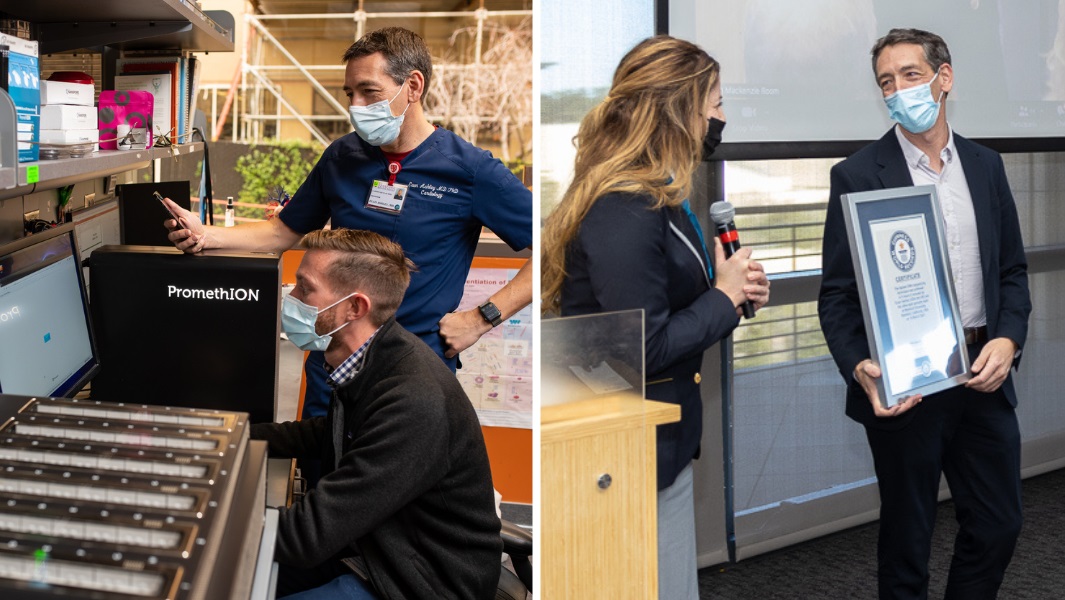“A new frontier”: Fastest ever DNA sequencing technique achieved

Euan Ashley (USA and UK) and the ultra-rapid genome team at Stanford University in Stanford, California (USA) broke new scientific boundaries and achieved the Guinness World Records title for the fastest DNA sequencing technique with a time of 5 hours and 2 minutes on 16 March 2021.

A professor of medicine, of genetics and of biomedical data science at the Stanford University School of Medicine, Euan Ashley, MB ChB, DPhil, has successfully led a team of scientists to develop a whole genome nanopore sequencing approach that can characterize pathogenic variants faster than any previously published approach in clinical samples.
In other words, a faster DNA sequencing technique enables better detection of variants that cause genetic disease, which can make a big difference in time-critical situations, such as identification of suspected pathogenic variants in a critically ill patient.
This is especially important when dealing with rare genetic diseases. Scientists can scan a patient's entire genome for all gene variants suggested by the scientific literature, even if that variant was discovered only the day before. Furthermore, if a patient doesn't initially receive a genetic diagnosis, there's still hope that scientists will find a new gene variant linked to the patient's disease down the line.
"A few weeks is what most clinicians call 'rapid' when it comes to sequencing a patient’s genome and returning results," said Ashley.
Fast diagnoses can mean less time in critical care units, fewer tests and faster recovery for many patients. Notably, the faster sequencing does not sacrifice accuracy.
"It was just one of those amazing moments where the right people suddenly came together to achieve something amazing. It really felt like we were approaching a new frontier." - Euan Ashley
Over the span of less than six months, the team enrolled and sequenced the genomes of 12 patients. In one of the cases, it took a snappy 5 hours and 2 minutes to sequence a patient’s genome, setting the world title for the fastest DNA sequencing technique.
The record was recognised by the National Institute of Science and Technology’s Genome in a Bottle group as well as being officially certified by Guinness World Records.
With this impressive reduction in time, Stanford scientists plan to offer sub-10-hour turnaround time to patients in intensive care units at Stanford Hospital and Lucile Packard Children’s Hospital Stanford - and, eventually, to other hospitals.

Collaborators in the record-breaking project include researchers from Stanford, NVIDIA, Oxford Nanopore Technologies, Google, Baylor College of Medicine and the University of California at Santa Cruz.
Ashley and the ultra-rapid genome team sequenced the human genome using an Oxford Nanopore PromethIon-48 machine.
How are you and your organization inspiring your audiences? Attempt to break a world record for brand awareness, a product launch, celebration, CSR, fundraising or employee engagement – Find out more here, or contact us for more information.


